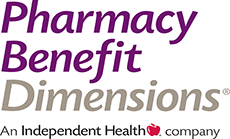On August 5, 2025, the FDA approved Ajovy® (fremanezumab-vfrm) for the preventative treatment of episodic migraine (defined as having less than 15 migraine headache days per month) in pediatric patients aged 6 to 17 years old who weigh at least 99 pounds. According to the National Institutes of Health, approximately 10% of children experience migraines. Migraines can cause pain, nausea, vomiting and sensitivity to light and noise. Genetic predisposition appears to play a role in pediatric migraines, along with certain chemicals in the brain, however, the exact cause of recurrent migraines in pediatric patients is still unknown. Migraines can occur randomly in children or may be brought on by triggers, like stress, certain foods and lack of sleep. Preventative strategies for pediatric migraine include lifestyle modifications to help ensure that children have a healthy diet, engage in exercise throughout the day, get enough sleep and manage their stress levels.
Ajovy® was originally approved by the FDA in 2018 for use in adult patients for the prevention of migraine. Ajovy® is administered as a dose of 225mg injected once a month subcutaneously (under the skin) in the stomach, thigh or upper arm. Ajovy® can be self-administered in patients 13 years and older. Per the medication’s package labeling, patients ages 6 to 12 must have Ajovy® administered by their health care provider or adult caregiver only. Ajovy® is a type of medication called a calcitonin gene-related peptide antagonist (CGRP). Other available CGRPs include Aimovig, Emgality®, Nurtec®, Ubrelvy®, and Qulipta®. Ajovy® is the only CGRP currently FDA-approved for use in pediatric patients for episodic migraine headaches.
Ajovy® was evaluated for safety and efficacy in a 12-week, multi-center, randomized, double-blind, placebo-controlled clinical trial called the SPACE trial of 225 pediatric patients 6 to 17 years old with episodic migraine. Based on the results of the SPACE trial, Ajovy® showed a greater reduction in the number of migraine headache days per month (2.5 less migraine headache days per month) compared to placebo (1.4 less migraine headache days per month). In pediatric patients weighing less than 99 pounds, the SPACE trial did not conclude an appropriate dosage that was safe and effective. In addition, the safety of Ajovy® has not been established in pediatric patients less than 6 years old or in the treatment of pediatric patients diagnosed with chronic migraine headaches (defined as having 15 or more headache days per month). Based on the results of the SPACE trial, the safety profile of Ajovy® in pediatric patients was observed to be similar to that of adult patients. Warnings and precautions of Ajovy® use include injection site reactions, high blood pressure and increased risk for Raynaud’s syndrome, which is a condition causing the small blood vessels in the fingers and toes to narrow and restrict blood flow.






